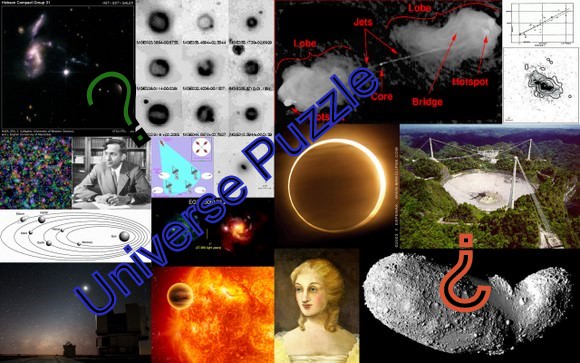How did you do in last week’s Universe Puzzle?
Do you enjoy these puzzles? What do you particularly like? Dislike? Would like to see changed? Would like to see more of? Let me know please!
Once again, this week’s puzzle requires you to cudgel your brains a bit and do some lateral thinking (five minutes spent googling likely won’t be enough). But, as with all Universe Puzzles, this is a puzzle on a “Universal” topic – astronomy and astronomers; space, satellites, missions, and astronauts; planets, moons, telescopes, and so on.
Where is the green valley? What are the hills/mountain range(s)/ridges which border it? How did it get its name?
UPDATE: Answer has been posted below.
The green valley I had in mind is indeed the region in a color-magnitude diagram of galaxies, between the red sequence and blue cloud. In this case five minutes spent googling would have given you this answer (so not really a Universe Puzzle).
It got its name because, first, between red and blue comes green, and second because one way of representing the number of galaxies per unit area in a chart (or graph) of their color vs luminosity is to draw contours (if the chart is representing hundreds of thousands of galaxies then plotting them all as points becomes visually bland, shall we say). And what does a chart with contour lines on it remind you of? A topographic map! So the red sequence and blue cloud would be ridges or mountains, and in between would be a …. valley.
At the time I accessed it, the Wikipedia entry is a good summary (with Wikipedia you have to be very careful that the contents of an entry haven’t changed!)
Check back next week for another Universe Puzzle!


A Wikipedia search solves this one.
It’s in a lot of places, and it is surrounded by various geographical features almost everywhere.
Yup. What did we do before Wikipedia? I remember being terribly frustrated that I would get 100’s of thousands of search results, and knowing full well that the answer to my query was buried somewhere in there. Wikipedia may not be completely accurate 10 times out of 10, but it is accurate enough to be the beginning of a more detailed search. Personally that’s what I love about Wikipedia: it gives meaningful context to results of searches that would otherwise be mired down at the bottom of the in too-much-whitenoise-information-to-be-useful category.
If Wikipedia is accurate, the Green Valley that you are more likely referring to is on Mars near the north pole, and was chosen for the site of the Phoenix Lander.
@gopher65 Yes wiki is great for everyday facts but when you need some physics or astronomy equation often the person who wrote it is more concerned with appearing erudite than explaining it to folk who haven’t already got a PhD in the subject.
Maybe she is referring to a figurative valley. There is a “green valley” that appears when categorizing galaxies by color and luminosity. Elliptical-like galaxies form a “red sequence”, and spiral-like galaxies form a “blue cloud” that both comes from the population of stars providing most of the light. (Red light mostly from old giant stars, and blue light mostly from young and massive main sequence stars.) There aren’t nearly as many galaxies with intermediate characteristics.
Or maybe I am being too esoteric.
There is another, slightly different, possibility. At the sides of the ‘green valley’ are two different populations of AGNs. Rather than being either spirals or ellipticals the two distinct groups of AGNs are associated with different phases of massive galaxy formation in the early universe. The older AGNs are redder and there is a distinct empty band (the green valley) before the younger and bluer galaxies are encountered. They may of course not be two distinct groups but rather two distinct phases in the same process.
Or maybe it’s me who’s being the esoteric one!
Green Valley is where the Sonora Astronomical Society meets in southern Arizona, being nestled at the base of the majestic Santa Rita Mountain Range in southern Arizona’s Santa Cruz Valley. It has a high elevation and is in one of the darkest site is the U.S., and has a high concentration of observatories.
It is the near location of the Kitt Peak Observatory, being the US’s National Observatory – 75 miles (100km.) from Green Valley itself, and is also the location of the Mt, Hopkins (MMT), Smithsonian, and Whipple Observatories. It also has the Titan II Missile Museum, too!
It is named that because its grass lands in the Coronado National Forest.
It cannot be on Mars, as the region where the Phoenix lander was is flat as a pancake!.
I love the answers by ricsand & ESA Exile.
They were talking about green valley in astronomy cast 179. The question was if green galaxies exist.